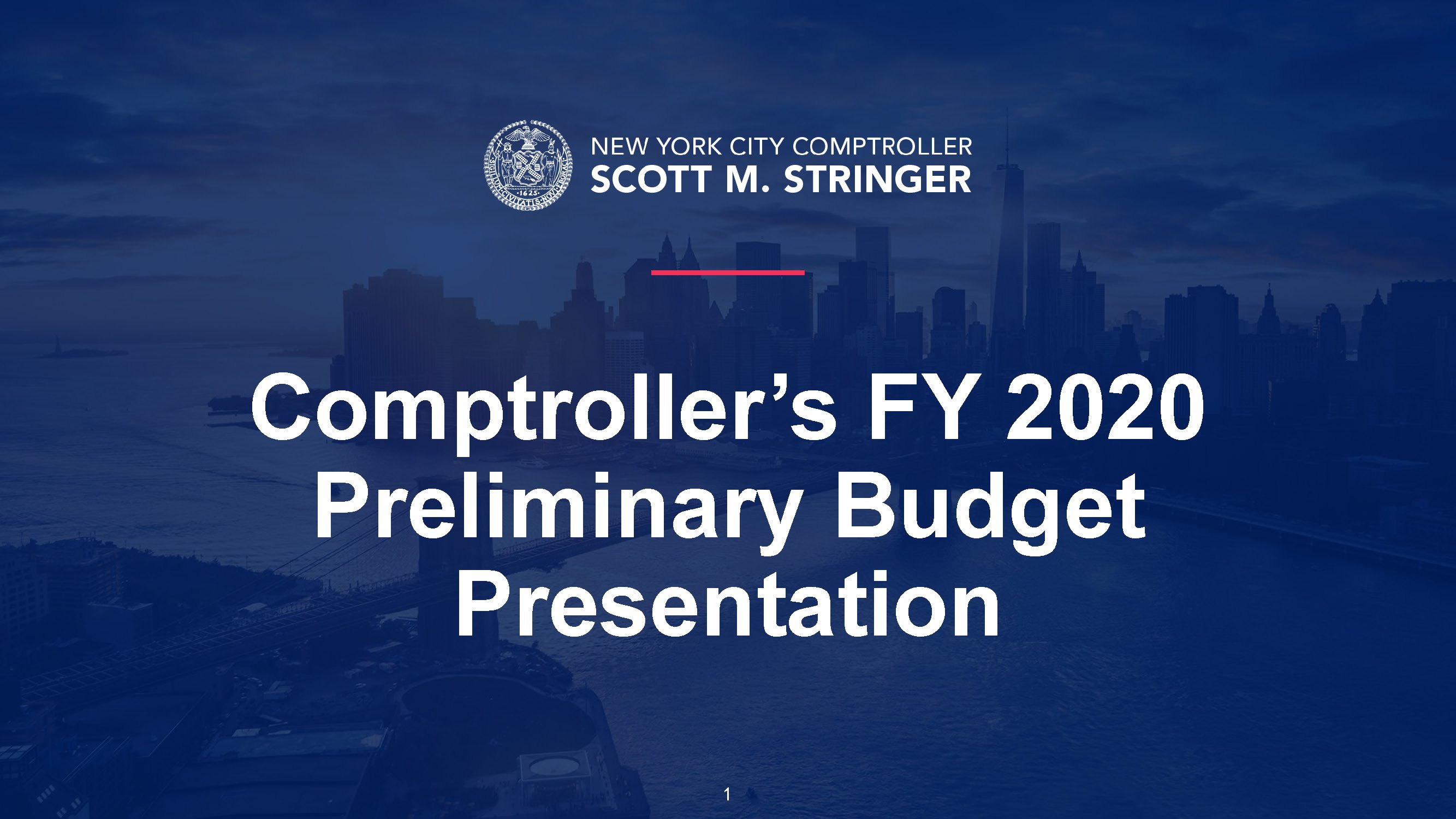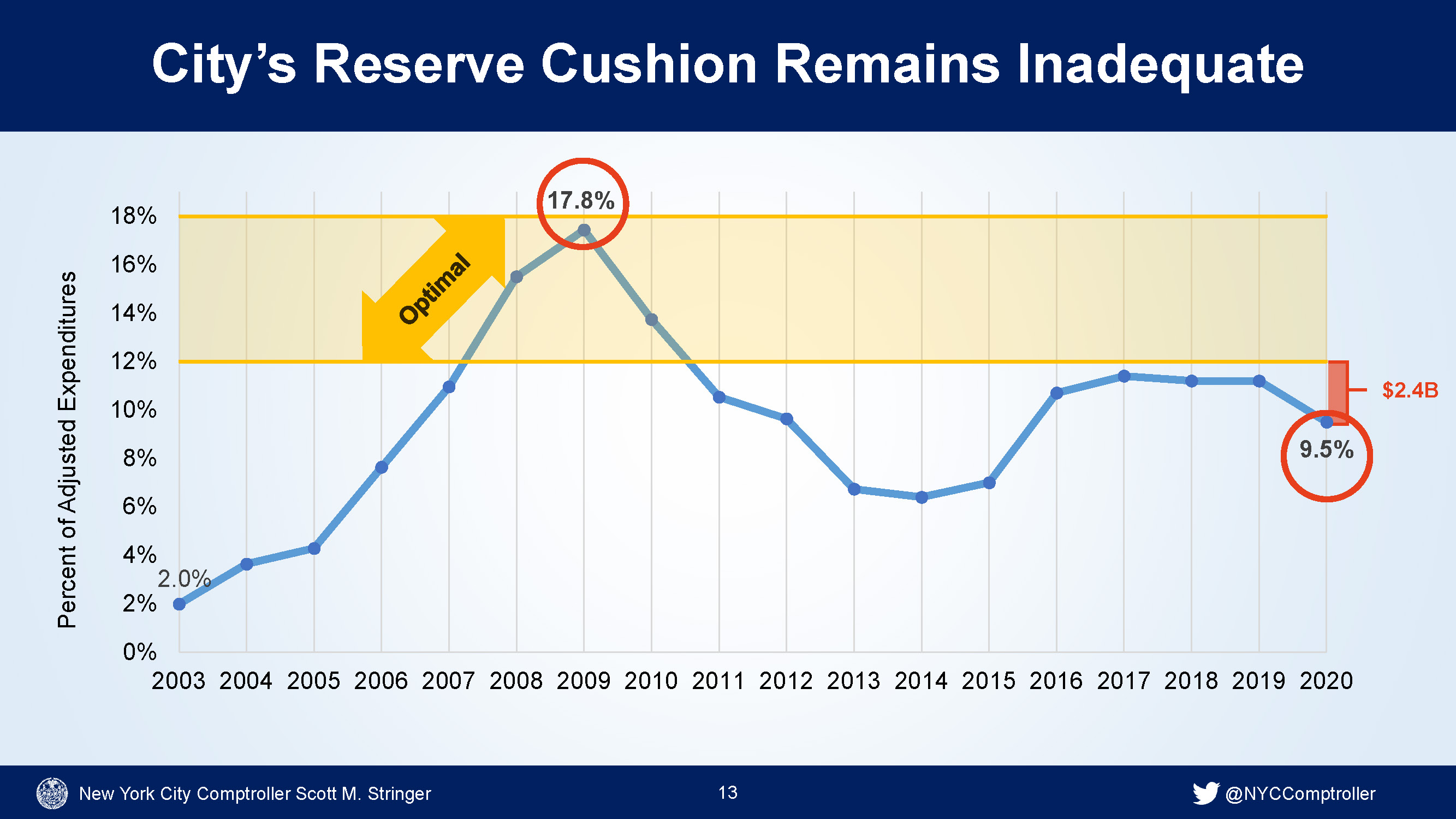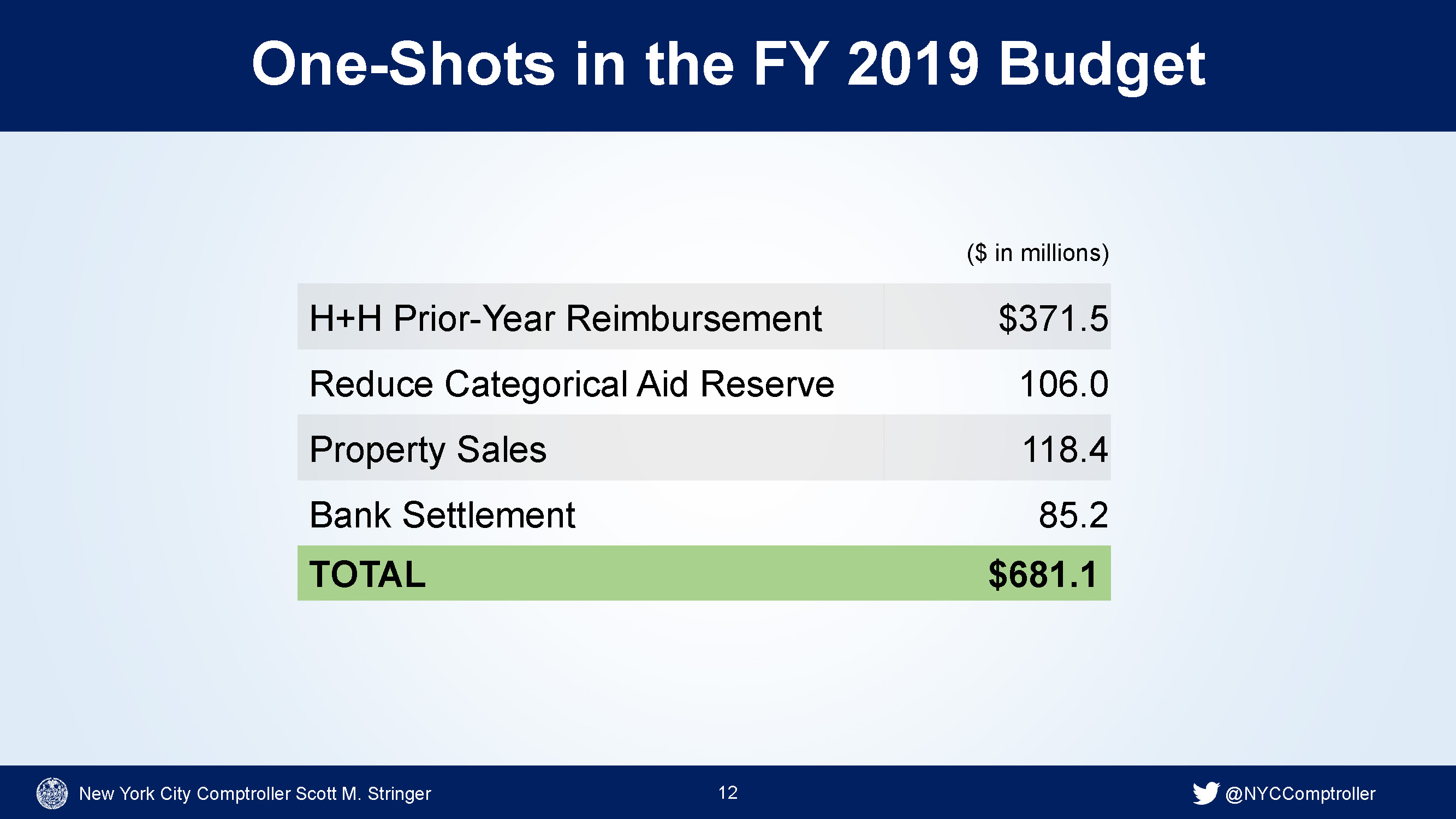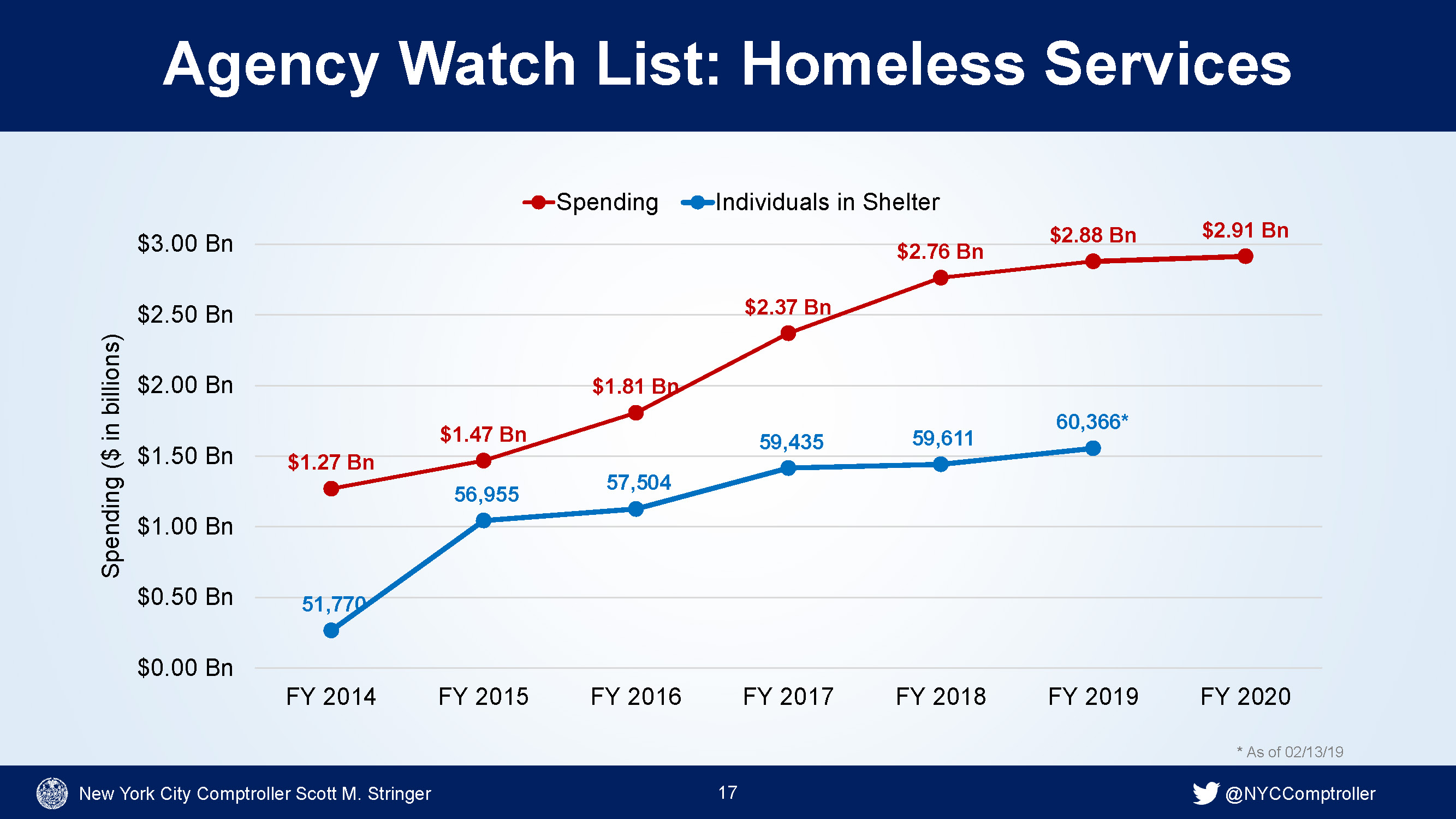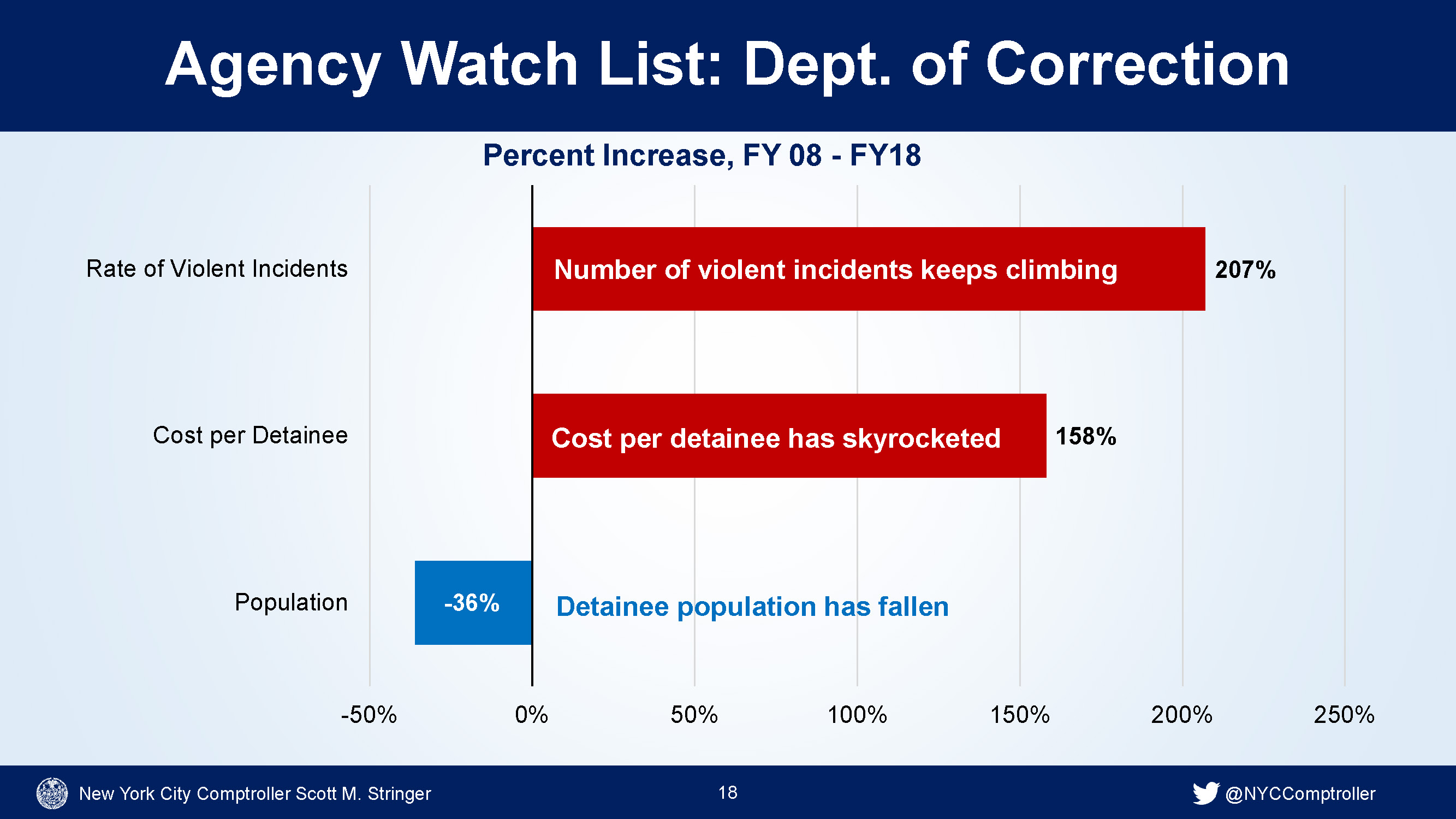Rating now equal to New York State, a rarity for the State’s municipalities
For the first time since 2007, Moody’s Investors Service has upgraded the City of New York’s General Obligation Bond credit rating. The rating was upgraded from Aa2 to Aa1, their second highest rating and equivalent to New York State’s Aa1 rating, which is significant because a local government is rarely rated as high as its home state. The Aa1 rating is the highest Moody’s credit rating the City has ever received.
Moody’s increased the City’s rating due to its increased economic diversity and decreased reliance on revenue from Wall St., its highly skilled workforce, first-class education and medical centers and low crime rates, among other factors. The upgrade is attributable to the City’s ongoing strong financial management – including the highest level of reserves the city has ever seen, affording it greater flexibility to respond to the next economic downturn.
Moody’s Investors Service rating can be found here.
“For the last five years, we’ve used the City’s budget to improve the lives of New Yorkers,” said Mayor Bill de Blasio. “Moody’s credit rating is validation of what we’ve always known: that you can be both a progressive and a strong fiscal manager.”
Additionally, Moody’s upgraded the City’s outstanding appropriation-backed debt, including debt issued by the Hudson Yards Infrastructure Corporation, the New York City Health and Hospitals Corporation, the New York City Educational Construction Fund, and the New York City Industrial Development Agency (New York Stock Exchange Project) from Aa3 to Aa2.
The City expects the upgraded rating to lower debt service costs, enabling it to more efficiently borrow and finance its capital projects, such as maintaining the city’s infrastructure.
Next week the City plans to offer approximately $986 million of General Obligation bonds to refund outstanding bonds.
In January, Mayor de Blasio announced his $92.2 Preliminary Budget for FY2020, a balanced budget that continues to fund critical services for New Yorkers and promotes fairness across New York City while also demonstrating fiscal responsibility. In addition to expanding programs such as 3-K for All, the Mayor called for $750 million in mandatory savings which will be achieved in part by deepening the City’s Partial Hiring Freeze and implementing the Administration’s first Program to Eliminate the Gap.
